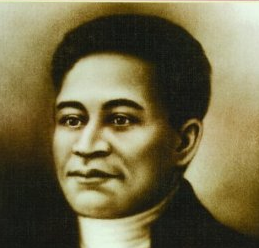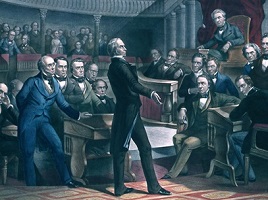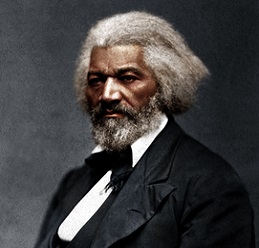Influence on Wheatley’s work
Inspired by classical Greek and Latin poetry Phillis used a style of writing called elegiac. An elegy is a type of poetic meter in which each couplet consist of a hexameter verse followed by a pentameter verse, conveying and expressing sad emotions. One of the leading elegiac Roman poets was Ovid, who was great influence to her work, she even translated his tales into English. Phillis was also influenced by philosophers and 18th century English poets and embarked into writing her own poetry.
Strongly influenced by her religious convictions she exerted power through her writing. She wrote pious and political poems as well elegies of prominent citizens. Her passion for immortalizing the dead and her rhyming verses made her poetry stand out. She eventually became the first African American to publish a book and the first woman to make a living from her writing.
Recognition and First Publication
In 1767 she wrote “An Address to the Atheist” and “An Address to the Deist”. On the same year at age 14 she had her first poem “On Messrs Hussey and Coffin” published in the Newport Mercury. The following year Wheatley wrote “To the King’s Most Excellent Majesty” praising King George III for repealing the Stamp Act.
Her breakthrough as a poet happened in 1770 when Phillis wrote a tribute to George Whitefield, “An Elegiac Poem On the Death of that celebrated Divine, and eminent Servant of Jesus Christ, the Reverend and Learned Mr. George Whitefield”. Whitefield had visited the Wheatleys in several occasions, he was a popular evangelist who was the chaplain of Selina Hastings, the Countess of Huntingdon, a wealthy philanthropist. Her poem caught the attention of Selina Hastings who eventually became Phillis’ patron. Not only was the Countess of Huntingdon paying attention to Phillis’ work but also the entire Bostonian society. Phillis had caught the attention of both sides of the Atlantic. In 1772 “On Recollection” was published a London magazine.
“Poems on Various Subjects, Religious and Moral”
In 1772 after having individual poems published, Phillis, with the support of Mary Wheatley prepared a proposal for the publishing of a volume of 28 of her collected works, the proposal was printed in the Boston Censor on February 29, 1772. Unfortunately no publisher was willing to print the works of a slave. Later that year Phillis had to defend her authorship in court. For a white society of the time it was hard to believe that a person of black skin would have the intellect to write such exquisite poetry. Seventeen of the most notorious Bostonians sat in court, including John Hancock, John Erving, Thomas Hutchinson and Andrew Oliver. They concluded that it was indeed the slave who had written the poems and signed an attestation giving her the credit for her writings.
Visit to London
Mary Wheatley was aware of the admiration of the Countess of Huntington for Phillis’ poetry and wrote to her asking for help. Selina Hastings secured the publication of the book with publisher Archibald Bell of London. In June Phillis traveled to London on the family owned ship, the London Packet, she was accompanied by Nathaniel Wheatley, son of John Wheatley. The purpose of the trip was twofold, to recover from illness and to promote her book. In London she was well received by British society, some were curious to meet her in person; she became the most notorious slave of her times as she built her image among notorious people of British society. However while in London Phillis was unable to meet Selina Hastings. News that her mistress Susanna Wheatley was seriously ill cut her stay in London to six weeks and on July 26 she departed back to Boston.
The book “Poems on Various Subjects, Religious and Moral” was published in London in September 1773. It contained 39 poems and was dedicated to Selina Hastings, the Countess of Huntingdon. The signed attestation and a letter from the slave’s master, John Wheatley, were included in the preface of her book. Some of the original poems had to be altered due to political tensions; independence ideas were popular in the colonies but were not suitable to a British audience.
Visit to George Washington
Phillis capitalized on political colonial events and wrote a poem to General George Washington, “To His Excellency, George Washington”. She enclosed the poem with a letter she wrote on October 26, 1775. In this poem she praises his heroism and supports the Revolutionary War. George Washington responded to her missive on February 28, 1776 where he apologized for his late reply and acknowledged her talents as a poetess. He invited Phillis to his residence for a private reading and to thank her for her poem. That year “To His Excellency, George Washington” was published in the Pennsylvania Gazette by editor Thomas Paine.
A Free Woman and misfortune
As soon as she returned to Boston, Phillis Wheatley was manumitted. As a demonstration of her gratitude to the Wheatley family she nursed her mistress, Susanna, through her illness until her death in 1774. She lived with the Wheatleys until 1778 when John Wheatley died.
Phillis married and had three children, none of them survived childhood. Her husband was a free black man named John Peters. He used the money she earned from her book to pay for his debts and eventually went to jail. Phillis had no time to write as she had to make a living to support her family. She died at 31, alone and poor.


